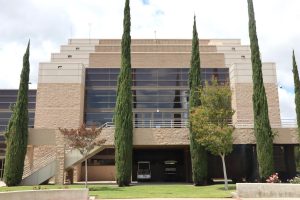Primary schools in Afghanistan create futures for young girls
The Afghan Girls’ School Committee aims to educate girls in a region where a large majority of women are uneducated. Photo credit: James Schaap
April 20, 2017
During Multicultural Day on April 11, students had the opportunity to attend a presentation on the Afghan Refugee Girls’ Primary School.
The school was established in 2002, after Edith Cole and Joe Franko traveled to Afghanistan, hoping to change the lives of children who were affected by bombings that occurred after 9/11. The two had no idea how they would help, but then they met Rahmatullah Rahimi. Rahimi was a teacher educating girls in his home because there were no schools for them in the area. Together the three founded the primary school.
Nancy Gallagher, co-chair on the Afghan Girls’ School Committee, discussed how the school has grown throughout the years.
“It started off with 200 girls. Today, 600 girls, grades first through sixth, attend the school, and there is a waiting list to get in,” said Gallagher.
In the presentation, students learned that the literacy rate of men in Afghanistan is 31%, but for women it is 15%. The primary school has given girls the opportunity to learn how to read and write, and take math, science, and English classes. Some of the girls have even been able to attend college.
Because the organization is nonprofit, fundraisers are essential.
“We have dinners, show a video, sell merchandise, and display objects made by the girls,” Gallagher said.
Peggy Craik is in charge of writing thank you letters to the donors, and has watched the support for the school flourish.
“Our donors are so amazing. We started off with a budget of 6,000 dollars. Now we have raised 50,000 dollars,” Craik said.
More information on the school can be found at www.afghangirlsschool.org







Nora • Apr 21, 2017 at 3 -07:00.04.
This article was great to read, the statistics behind it really pulled everything together. Also, i appreciate that the student voice is writing about the happenings outside the United States, because sometimes i feel that we all get wrapped up in ourselves and are blindsided to the world around us and their everyday problems.